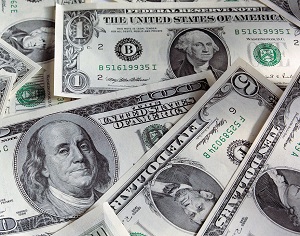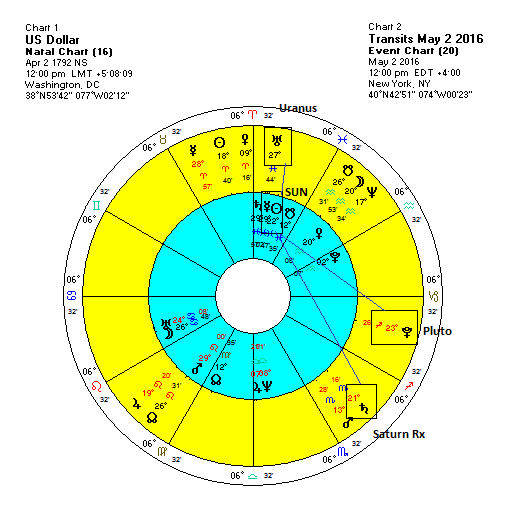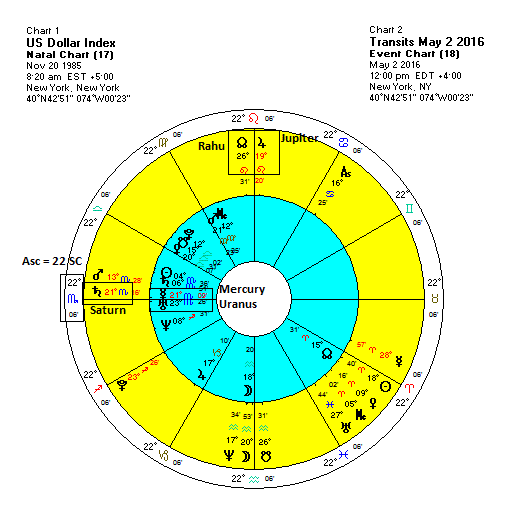 (2 May 2016)
Global stock markets were lower last week after the Bank of Japan
surprised investors by failing to deliver another round of QE stimulus
on Thursday. Coming just a day after the Fed issued a wishy-washy
statement on the prospect for higher rates this year (definitely,
maybe!), the stand pat decision by the BOJ raised a red flag that all
may not be well in Japan. Even more worrisome was the growing
perception that the BOJ, and by extension, other major central banks,
may be rethinking their policy options as the world economy looks as
limp as ever.
(2 May 2016)
Global stock markets were lower last week after the Bank of Japan
surprised investors by failing to deliver another round of QE stimulus
on Thursday. Coming just a day after the Fed issued a wishy-washy
statement on the prospect for higher rates this year (definitely,
maybe!), the stand pat decision by the BOJ raised a red flag that all
may not be well in Japan. Even more worrisome was the growing
perception that the BOJ, and by extension, other major central banks,
may be rethinking their policy options as the world economy looks as
limp as ever. If the Fed has been painted into a corner by its fear of raising rates lest it spark a stock market crash, then the BOJ and ECB are looking like they are out of bullets. Negative interest rates haven't worked in Japan as the Yen has actually risen (the exact opposite of the intended aim) and stocks have declined precipitously.
Quantitative easing (QE) which mandated buying assets like government and corporate bonds was intended to move money into riskier assets like stocks. This worked for the past few years but it now appears to be a case of diminishing returns. Since the ECB's Mario Draghi introduced even more asset buying in March, the German DAX index has been mostly flat. Maybe central banks are not as omnipotent as they think they are. And more to the point, more market participants may be realizing that they are limited in terms of what they can do for the economy. And if they can't resurrect the economy, then that may mean they will be less effective at keeping stock markets afloat.
In last Wednesday's meeting, Federal Reserve signaled its preoccupation with ongoing troubles in the global economy. This made it even more reluctant to raise US interest rates. Combined with the BOJ surprise non-move the following day, the Dollar fell to its lowest level since the middle of last year. The decline pushed commodities like gold and oil higher. Gold has now moved above $1300 while oil is fast approaching $50.

We can see how the current planetary alignments may be interacting with the relevant horoscopes of the US Dollar. Initially, we can take the Coinage Act of April 2, 1792 (no time) as the birth of the Dollar. The current decline in the Dollar Index from a high of 100 on December 1 to its current level below 93 may be linked to the transit of Saturn. Saturn (now at 21 Scorpio) recently stationed in an exact 120 degree alignment with the natal Sun (22 Pisces). Although this is not a standard Vedic aspect, it nonetheless should be seen as a negative influence on the Dollar. The additional close alignments of Uranus (27 Pisces) and Pluto (23 Sagittarius) likely amplify the negativity of Saturn in this instance.
Another useful chart in this regard is the first trade chart of the US Dollar Index in 1985. The Dollar Index (USDX) is a aggregated value of the greenback against its major trading partners. We can see how pivotal Saturn in Scorpio is in this chart also since it is conjunct the Ascendant (22 Scorpio) and Mercury-Uranus conjunction. One of the most basic tenets of financial astrology is that Saturn transits are negative and usually coincide with declines, all other things being equal. Here we have a situation where Saturn is central to two significant horoscopes representing the US Dollar. The Dollar has fallen during the time period when this Saturn transit was closest.

So what does the future hold? As Saturn continues its four-month long retrograde cycle (begun on March 25th), it will back away from this conjunction at 21-22 Scorpio. Therefore, I would expect some improvement in the Dollar fairly soon. Other aspects also figure into the equation as Jupiter is about to station direct next week in Leo. This may have a positive effect on the 1985 chart as it conjoins Rahu at the very top of the chart in the next couple of months. This Jupiter-Rahu conjunction at 20-23 Leo will also aspect the Venus (20 Aquarius) in the 1792 chart so that is another bullish influence to consider. Looking further ahead, I would also think that the entry of Jupiter into Virgo in August will also provide a lift for the Dollar. Jupiter remains in Virgo for 13 months until the fall of 2017 so that will likely keep the Dollar fairly strong. Virgo is the 11th house of gains in the 1985 Dollar Index horoscope, so Jupiter's presence will probably coincide with a rally.
Weekly Market Forecast
As noted, stocks were generally weaker last week as worries about Japan's stagnant economy undermined confidence. The Dow lost 1% on the week and fell below 18,000. It recovered somewhat today (Monday) but remains below the 18K level. Indian stocks also fell with the Sensex dropping about 1% last week with an additional small decline on Monday.
This negative outcome was in line with my expectations in last week's stock market forecast as I thought Thursday's Mercury retrograde station would likely coincide with some downside late in the week. Moreover, Mercury's alignment with Mars was quite close (by 15 degree multiples) so that boosted the probability of a negative market mood.
This week looks somewhat more positive at least in the early going as the Sun is aspected by bullish Jupiter on Monday and Tuesday. Much of the positive influence of this aspect may have manifested already on Monday in the US, however, so it remains to be how much optimism is left. Since the Sun aligns with Saturn on Wednesday and Thursday, I would be less positive about the second half of the week.
For more details and analysis on market trends for this week, this month and this year, please check out my weekly MVA Investor Newsletter. The newsletter includes discussion of US and Indian stock markets, as well as gold, oil and major currencies.